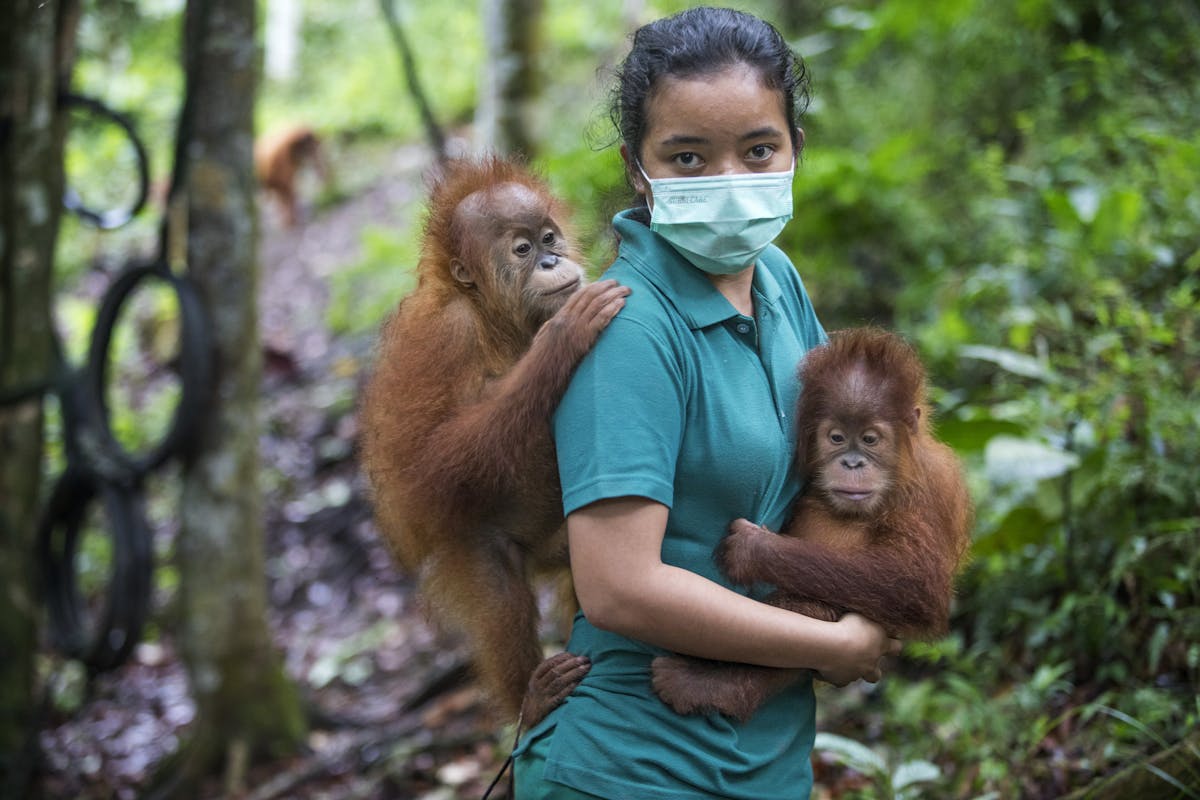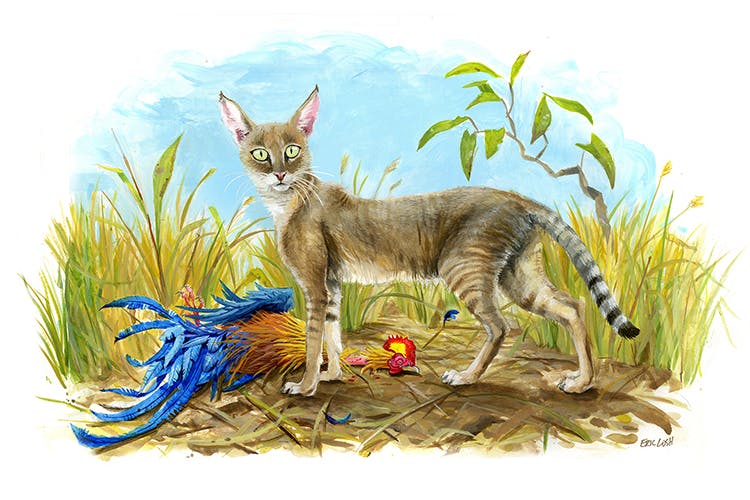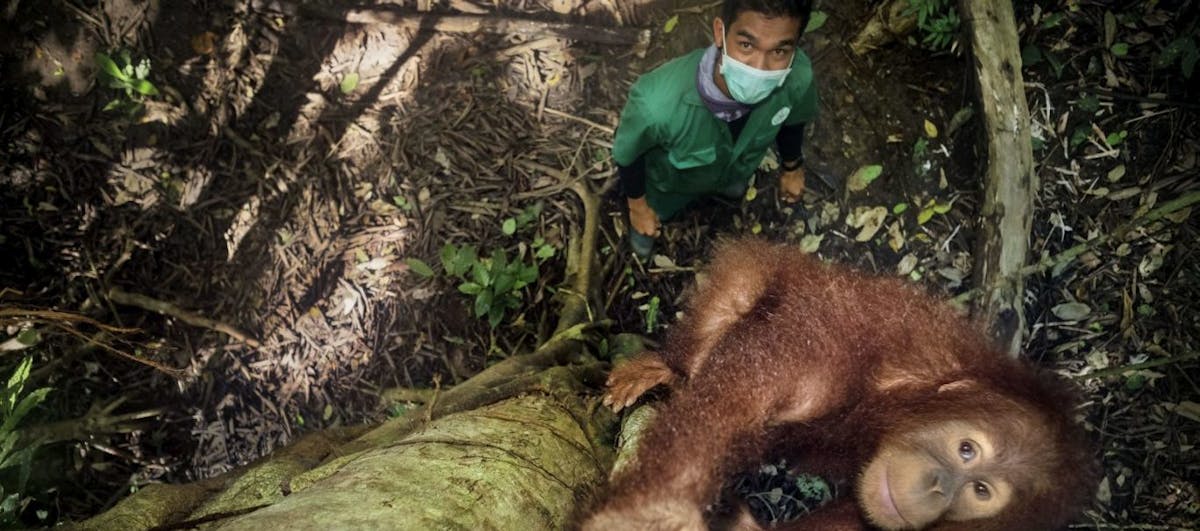orangutans
Primates in Peril: Person of the Forest
You do not need to see an orangutan in the wild to be convinced that they have big personalities! Take a look at any photo and you’ll see an animal that, like humans, can be playful, soulful, and expressive. Given that they share nearly 97% of our genes, it is no surprise that we feel a type of kinship with them.
There are three species of orangutan, which means “person of the forest” in the Malay language—Sumatran, Bornean and Tapanuli—and they all play a critical role in their tropical forest ecosystems. They are gardeners, or seed dispersers, which means that they ingest seeds of the fruits they eat and then effectively plant them through their feces, far from the parent tree. By dispersing seeds, they help maintain the forests that are so vital in sequestering and storing carbon in our fight against rising greenhouse gas levels and climate change.

But orangutans are in trouble and all three species are Critically Endangered. They are losing their forest because of logging and conversion to plantations, mining, construction of hydroelectric dams, draining of peat swamps, and human-caused forest fires. This has left these primates with a mere 20% of their original habitat, which spans Indonesia and Malaysia. Historically there were more than 230,000 orangutans, but today the numbers pale in comparison. There’s only about 104,000 Bornean Orangutans, 7,500 Sumatran Orangutans, and a mere 800 Tapanuli Orangutans left in the wild. Our reddish-orange-furred friends need our help.
The Re:wild Solution
In the peatlands of Indonesia’s Central Kalimantan, we are supporting the Borneo Nature Foundation and the government of Indonesia partners in preventing annual human-caused peat-swamp fires. These fires destroy habitat critical to the world’s largest protected population of orangutans, in addition to releasing more carbon stored in these peatlands than all of the fossil fuels emitted annually by the EU.
In Sumatra’s Leuser Ecosystem—the last place on Earth where Sumatran Orangutans, Sumatran Rhinos, and Asian Elephants still live together in the wild—we are supporting a network of grassroots organizations and the government of Indonesia’s partners. These groups are rehabilitating and releasing injured orangutans, reintroducing orangutans to native habitat, and protecting their forest home, including expansion of forests under protection.
An international team of scientists described the Tapanuli Orangutan in 2017, demonstrating that the Tapanuli Orangutan is genetically and morphologically distinct from the Sumatran Orangutan, and therefore a separate species. Tapanuli Orangutans live in a few forest patches in the Central, North and South districts of Tapanuli in the province of North Sumatra, in an area called the Batang Toru Ecosystem. Just two years after its historic identification, the Tapanuli Orangutan joined the list of the world’s most imperiled primates, published in the ‘Primates in Peril: The World’s 25 Most Endangered Primates, 2018-2020’ report. The main threat to the species is an ongoing hydroelectric dam project, which the IUCN SSC Primate Specialist Group Section on Great Apes has asked to be put on hold, as well as ongoing forest conversion and human-orangutan interactions that have led to orangutans being killed and wounded.



